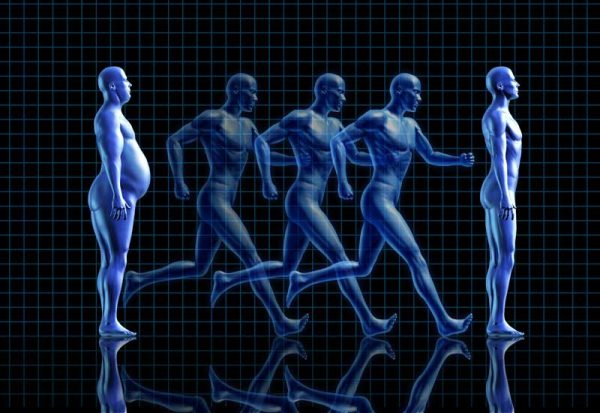Hormone replacement therapy (HRT) has long been associated with women undergoing menopause. However, this treatment is not exclusive to women; men can also benefit from hormone replacement therapy, especially those experiencing age-related hormone decline or specific medical conditions. This article aims to provide a comprehensive guide on HRT for men, exploring its purpose, benefits, potential risks, and available treatment options.
What is Hormone Replacement Therapy (HRT)?
Hormone replacement therapy (HRT) is a medical treatment used to replace or supplement hormones that the body no longer produces at optimal levels. The therapy is commonly used to address hormonal imbalances in men and women. For men, the primary focus of HRT is to maintain or restore optimal testosterone levels, which are essential for overall health and well-being.
Why Might Men Need Hormone Replacement Therapy?
Men may require hormone replacement therapy for various reasons. The most common cause is age-related testosterone decline, also known as andropause or male menopause. Testosterone levels gradually decrease as men age, typically starting around the age of 30, with more significant declines occurring after 40. This decline can lead to symptoms similar to those experienced by women during menopause, including fatigue, depression, loss of libido, and muscle mass reduction.
Besides age-related decline, men may need HRT due to specific medical conditions or treatments, such as hypogonadism, prostate cancer treatments, or injury to the testicles. In such cases, HRT can help restore hormone levels and alleviate associated symptoms.
Benefits of Hormone Replacement Therapy for Men
- Improved Mood and Cognitive Function: Low testosterone levels can contribute to mood swings, irritability, depression, and anxiety. HRT can help stabilize mood and improve cognitive function by restoring hormonal balance.
- Increased Muscle Mass and Strength: Testosterone plays a vital role in muscle growth and strength. HRT can help increase lean body mass, making it easier for men to maintain or build muscle.
- Enhanced Libido and Sexual Function: Low testosterone can lead to decreased sex drive and erectile dysfunction. HRT can help restore libido and improve overall sexual function.
- Improved Bone Health: Testosterone is crucial for maintaining bone density. As men age, decreased testosterone levels can contribute to osteoporosis. HRT can help increase bone density, reducing the risk of fractures and other bone-related issues.
- Better Metabolic Health: Low testosterone is linked to increased body fat and a higher risk of developing metabolic syndrome, diabetes, and cardiovascular disease. HRT can improve insulin sensitivity, reduce body fat, and promote overall metabolic health.
- Enhanced Quality of Life: By addressing the symptoms of low testosterone, HRT can lead to an improved sense of well-being and quality of life.
Risks and Side Effects of Hormone Replacement Therapy for Men
While HRT offers many benefits, it is not without risks and side effects. Some potential risks and side effects include:
- Prostate Health Concerns: There is a potential risk that HRT could stimulate the growth of existing prostate cancer cells or contribute to the development of benign prostatic hyperplasia (BPH). Regular prostate screenings and monitoring are crucial for men undergoing HRT.
- Cardiovascular Risks: Some studies suggest a link between testosterone therapy and an increased risk of heart attacks and strokes, particularly in older men or those with pre-existing cardiovascular conditions. However, more research is needed to confirm these findings.
- Blood Clots: Testosterone therapy may increase the risk of blood clots in some men, particularly those with pre-existing clotting disorders or a history of deep vein thrombosis (DVT) or pulmonary embolism.
Sleep Apnea: HRT has been associated with worsening sleep apnea in some men, particularly those who are overweight or have pre-existing sleep apnea.
- Skin Reactions: Some men may experience skin reactions at the site of testosterone application, particularly with topical treatments like gels, patches, or creams.
- Gynecomastia: HRT may cause breast tissue growth in some men, a condition known as gynecomastia. This side effect is generally reversible once treatment is discontinued.
- Mood Swings: Although HRT can improve mood overall, some men may experience mood swings or emotional instability, particularly during the initial stages of treatment.
- Testicular Shrinkage: Testosterone replacement therapy can cause testicles to shrink in size, as the body reduces its natural production of testosterone in response to the treatment. This effect may be temporary or permanent, depending on the individual and duration of therapy.
Treatment Options for Hormone Replacement Therapy in Men
There are several methods for administering hormone replacement therapy in men. The choice of treatment depends on factors such as individual preference, convenience, and medical history. Common HRT treatment options for men include:
- Topical Treatments: Testosterone gels, creams, and patches are applied directly to the skin, allowing the hormone to be absorbed into the bloodstream. These treatments are typically administered daily and offer a steady release of testosterone.
- Injections: Testosterone injections deliver the hormone directly into the muscle, where it is slowly released into the bloodstream. Injections are usually administered every 1-3 weeks, depending on the formulation and dosage.
- Pellets: Testosterone pellets are small, rice-sized implants inserted under the skin, typically in the hip or buttock area. The pellets slowly release testosterone over several months, providing a steady hormone level. Pellet insertion is typically performed every 3-6 months.
- Oral Treatments: Testosterone can be taken orally in the form of pills or capsules. However, oral testosterone is less commonly used, as it may have adverse effects on liver function and is less effective at maintaining stable hormone levels compared to other options.
- Nasal Gel: Testosterone nasal gel is a relatively new treatment option that is administered as a gel into the nostrils. The gel is typically applied twice daily and provides a steady hormone release.
Conclusion
Hormone replacement therapy can be a life-changing treatment for men experiencing symptoms related to low testosterone levels or other hormonal imbalances. HRT offers numerous benefits, including improved mood, increased muscle mass, enhanced libido, and better overall quality of life. However, it is crucial to weigh the potential risks and side effects and work closely with a healthcare provider to determine the most appropriate treatment plan. By carefully considering individual needs and monitoring treatment progress, men can experience the benefits of HRT while minimizing potential risks.
Medical References:
- Bhasin, S., Cunningham, G. R., Hayes, F. J., Matsumoto, A. M., Snyder, P. J., Swerdloff, R. S., & Montori, V. M. (2010). Testosterone therapy in men with androgen deficiency syndromes: an Endocrine Society clinical practice guideline. The Journal of Clinical Endocrinology & Metabolism, 95(6), 2536-2559.
- Hackett, G., Kirby, M., Edwards, D., Jones, T. H., Wylie, K., Ossei-Gerning, N., … & British Society for Sexual Medicine. (2017). British Society for Sexual Medicine guidelines on adult testosterone deficiency, with statements for UK practice. The journal of sexual medicine, 14(12), 1504-1523.
- Morgentaler, A., Zitzmann, M., Traish, A. M., Fox, A. W., Jones, T. H., Maggi, M., … & Lunenfeld, B. (2016). Fundamental concepts regarding testosterone deficiency and treatment: international expert consensus resolutions. Mayo Clinic Proceedings, 91(7), 881-896.
- Snyder, P. J., Bhasin, S., Cunningham, G. R., Matsumoto, A. M., Stephens-Shields, A. J., Cauley, J. A., … & Ellenberg, S. S. (2016). Effects of testosterone treatment in older men. New England Journal of Medicine, 374(7), 611-624.
- Traish, A. M., Haider, A., Haider, K. S., Doros, G., & Saad, F. (2017). Long-term testosterone therapy improves cardiometabolic function and reduces the risk of cardiovascular disease in men with hypogonadism. The journal of sexual medicine, 14(9), 1065-1076.
By searching these sources, you can find more in-depth information on hormone replacement therapy for men, including the benefits, risks, and treatment options.




